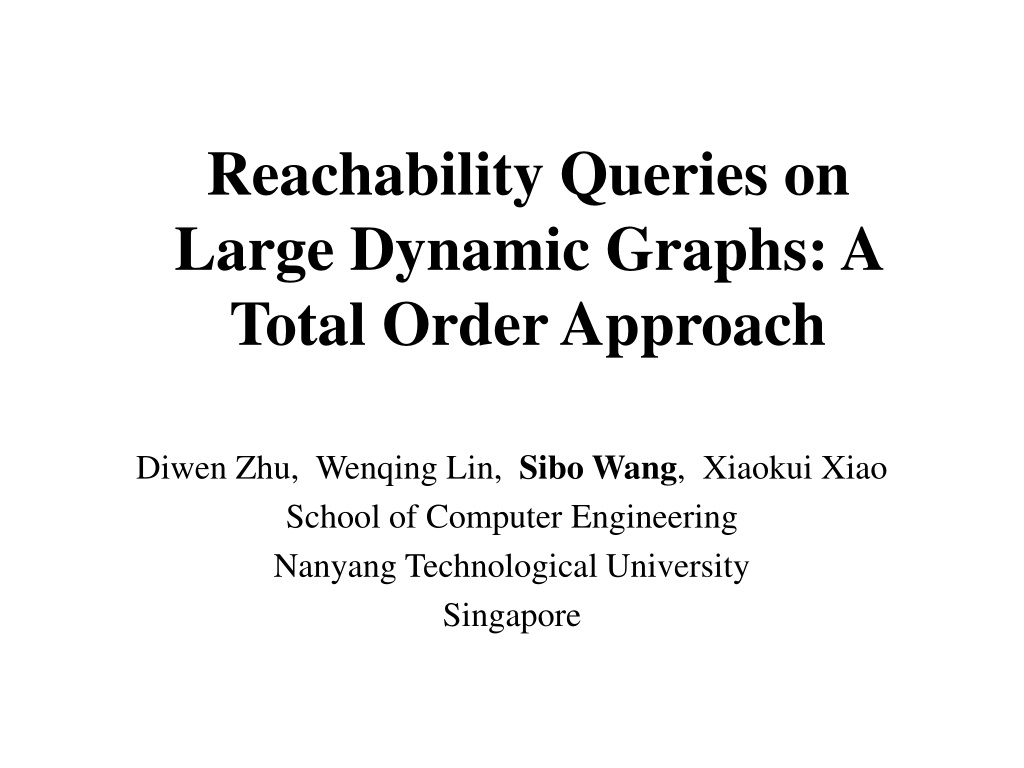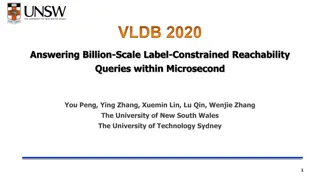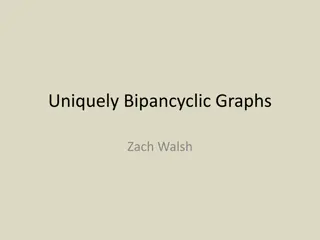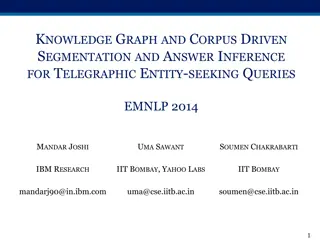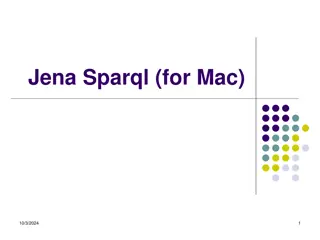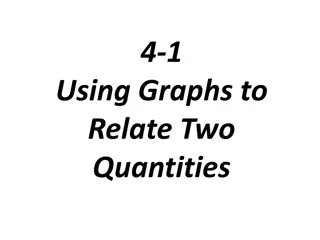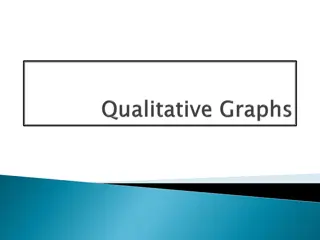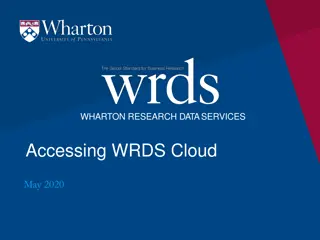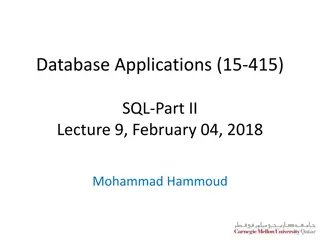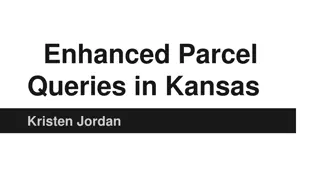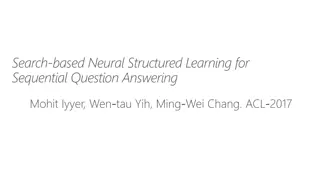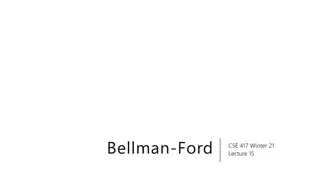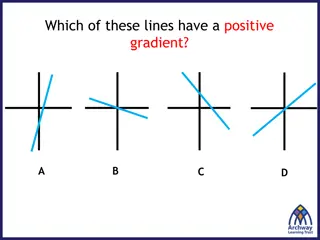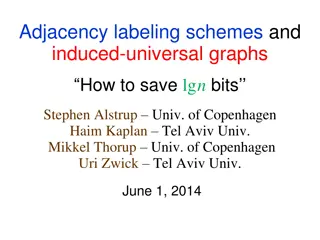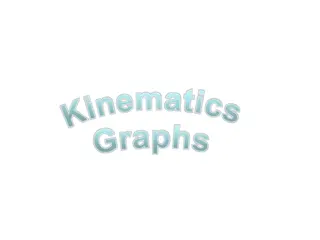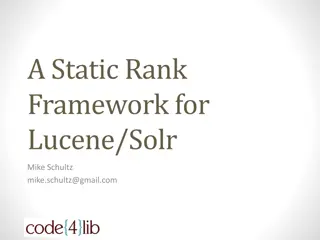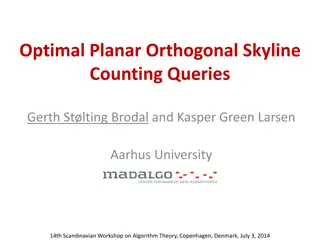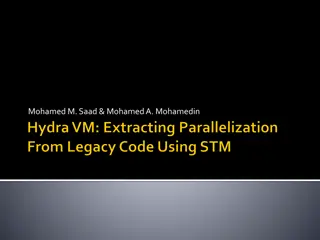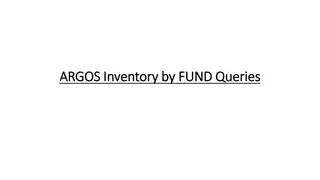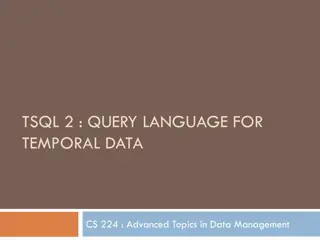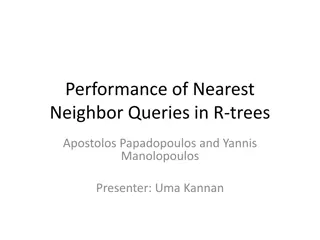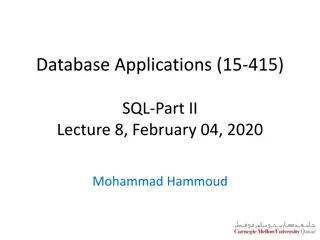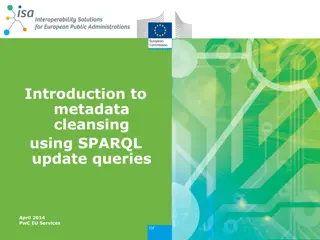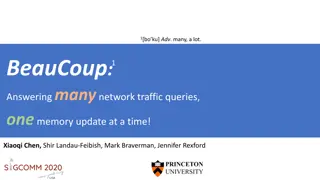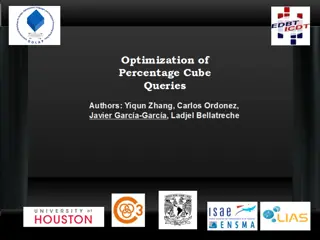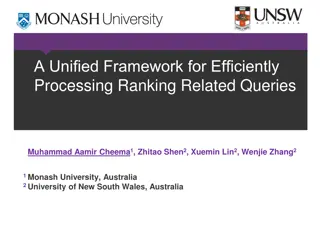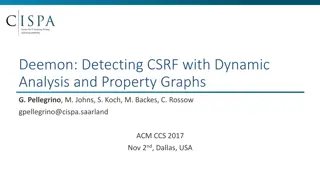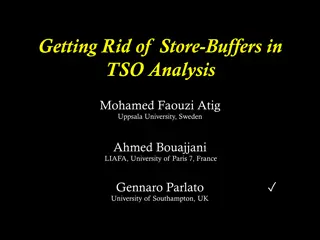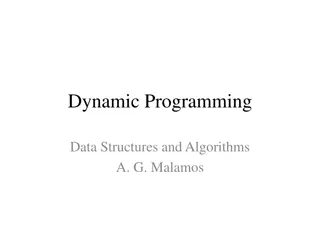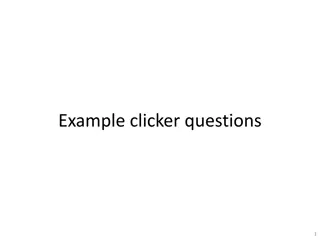Total Order Approach for Reachability Queries in Dynamic Graphs
"Explore a total order approach for reachability queries in large dynamic graphs, discussing existing solutions for static graphs and dynamic updates. The Total Order Labeling framework and Butterfly update algorithms are presented as key contributions, focusing on scalability and transitive closure solutions."
Download Presentation

Please find below an Image/Link to download the presentation.
The content on the website is provided AS IS for your information and personal use only. It may not be sold, licensed, or shared on other websites without obtaining consent from the author. Download presentation by click this link. If you encounter any issues during the download, it is possible that the publisher has removed the file from their server.
E N D
Presentation Transcript
Reachability Queries on Large Dynamic Graphs: A Total Order Approach Diwen Zhu, Wenqing Lin, Sibo Wang, Xiaokui Xiao School of Computer Engineering Nanyang Technological University Singapore
Reachability queries on Graph Given a directed graph G=(V,E) answer whether s t. a b ? Yes, a h b d g? No. d a c g e f h b XML documents Social networks Semantic Web Road networks
Existing solutions Most techniques focus on static graphs Goal: good trade-off Index size Existing state-of-the-art static techniques: TF-Label (TF) [Cheng et al. SIGMOD 2013]; Distribution Labeling (DL) [Jin et al. VLDB 2013]; Pruned Landmark Labeling (PLL) [Yano et al. CIKM 2013].
Dynamic graphs XML documents Social networks Semantic Web Road networks Handling updates with static techniques Rebuild index from scratch
Existing dynamic graph solutions Scalability Transitive closure solutions < 104 nodes [Bramandia TKDE 2010] < 106nodes Generality [Schenkel ICDE 2005]: only for XML graphs; Preprocessing time Path-tree ([Jin. TODS 2011]) Query time Dagger ([Yildirim. CoRR 2013])
Contributions Total Order Labeling (TOL) framework+ dynamic updates on TOL Butterfly: devising a good reachability index under TOL
Contribution 1: TOL framework+ dynamic updates on TOL Total order Labeling (TOL) TF-Label DL PLL Graph TOL index Insert Delete update TOL index
Contribution 2: Butterfly Total order Labeling (TOL) TF-Label DL PLL Butterfly
Contributions 1: TOL Framework+ update algorithms
Assumption Directed acyclic graph (DAG) We can easily convert a directed G to a DAG G*
TOL: Total order Total order ? for all vertices: ?(u)< ? (v): vertex u has higher relative importance than vertex v in reachability queries e a f b d Graph G c g
TOL: index structure (i) 2-hop labeling index In-Label: ???(?) Out-Label: ????(?) Query: v Lin(v) Lout(v) a c {a} ? ?? (????(?) {?}) = {c}, (???(?) {?})={a}: {c} {a}= . Answer: No. a ?? (????(?) {?}) = {a}, (???(?) {?})={a,c}: {a} {a,c} Answer: Yes.
TOL: index structure (ii) Index: ???(?) contains all vertices u satisfying: Reachability Constraint ? ? Order Constraint, l(?) < l(?); Path Constraint, w,? w, w ?, l(w)<l(?). Example ???(c) : = {a} Reachability Constraint: {a,b} Order Constraint: {a,b} Path Constraint: {a,d} l(a)=1, l(b)=2, l(c)=3,l(d)=4 d 4
Instantiation of TOL index TF/DL/PLL Implicitly define a total order Label sets constructed satisfying three constraints.
Problem Definition: Dynamic updates on TOL indices Definition: Input: total order ?, TOL index , and a vertex u to be inserted/deleted Output: a new total order ? and TOL index . Why Maintaining TOL: Efficient for static graph Update the indices to still be TOL
TOL insertion: deciding total order Imposed constraints: ?(?)< ?(?)< ?(?) <?(?) After insertion of vertex u, new total order ? satisfies ? (?)< ? (?)< ? (?) <? (?) b 2 c a 3 1 d 4 b 2 New vertex ? : E.g. ? (?)< ? (?) <? (?)< ? (?)<? (?) c ? 3 a 4 1 d 5
TOL insertion: choosing ?(?) (i) n+1 choices. n=|V|. ?(?)< ?(?)< ?(?) <?(?) ? (?) Each choice of ? (?) new TOL index Provides the best index: minimize the total index size. Intuition: index size average query performance
TOL insertion: choosing ?(?) (ii) Na ve approach: Set ? ? from 1 to n+1 Construct index for each case & then choose the minimal one. Our light weighted incremental approach: Set ? ? to n+1, calculate the index size Set ? ? to n, calculate the change of index size. Repeat the above process.
TOL Insertion: updating TOL indices Step 1: Construct ???(?) and ????(?) for newly inserted vertex ?. Insert ? ???(?) ????(?) v + ???(?) ????(?) TOL index Update ???(?1) ???(?2) ????(?1) ????(?2) ?1 ?2 TOL index Temp index ? ??(?1) ? ??(?2) ? ???(?1) ? ???(?2) ?1 ?2 Step 2: Update label set of other vertices
TOL insertion: update TOL indices Cases that the insertion of vertex u impact other label sets. ? ? vi vk vi vk (ii) (i)
TOL Deletion Delete vertex ? Deciding new total order. ?(?)< ?(?) <?(?)< ?(?) <?(?) Update label sets: Remove ???(?) and ????(?) & remove ? from other label sets. Update other label sets Complementary cases
Summary: TOL updates Insertion/deletion Maintain the total order of existing vertices. Still satisfy the three constraints after updates
An interesting Observation Improve existing TOL index remove a vertex ? ? TF/DL/P LL Temp index re-insert ? TOL index
Contribution 2: Butterfly Butterfly: Choosing better total order with score function f Iterative approach Select vertex v1 with highest ?(v1), Set l(v1)=1, remove v1 from G G G Select vertex v2 with highest ?(v2), Set l(v2)=2, remove v2 from G G=
Two score functions Butterfly-U (BU) Butterfly-L (BL) Index construction on the fly: Calculate order of a vertex; Remove the vertex; Add the removed vertex to label sets of other vertices.
Experiment setup Running Environment Intel Xeon 2.4GHz CPU 48GB RAM, Ubuntu 12.04. C++ implementation. Query generation: Random queries Updates generation: randomly remove 104 vertices, insert back in reverse order of their removal
Dynamic Graphs: insertion Competitor Dagger ([Yildirim. CoRR 2013]) Insertion can be done in milliseconds
Dynamic Graphs: deletion Comparable performance as Dagger in deletion
Dynamic Graphs: query performance More efficient query performance
Static Graphs: index size smaller size than other indices in almost all cases
Static graph: preprocessing time less preprocessing time in almost all cases
Static graph: query time less query time in all cases
Conclusion Propose TOL framework and update algorithms on TOL framework. Construct a good initial TOL indices.
Thanks Q&A
Complexity ?1 ?? TOL insertion Worst case: O(n3) ?1 ? ?? ? ???(?) ? ??(?) TOL deletion Worst case: O(n3) ????(??) ???(??) Efficient in practice
TOL updates DAG g Graph g g might not be DAG Adopting the solution in [Yildirim. CoRR 2013] Incrementally maintaining strongly connected components (SCC).
Difference of BU and BL Differs in the way that they quantify the importance of each vertex. Both of them use some heuristics to derive the total order that tries to capture the relative importance as accurate as possible Using different heuristics.
